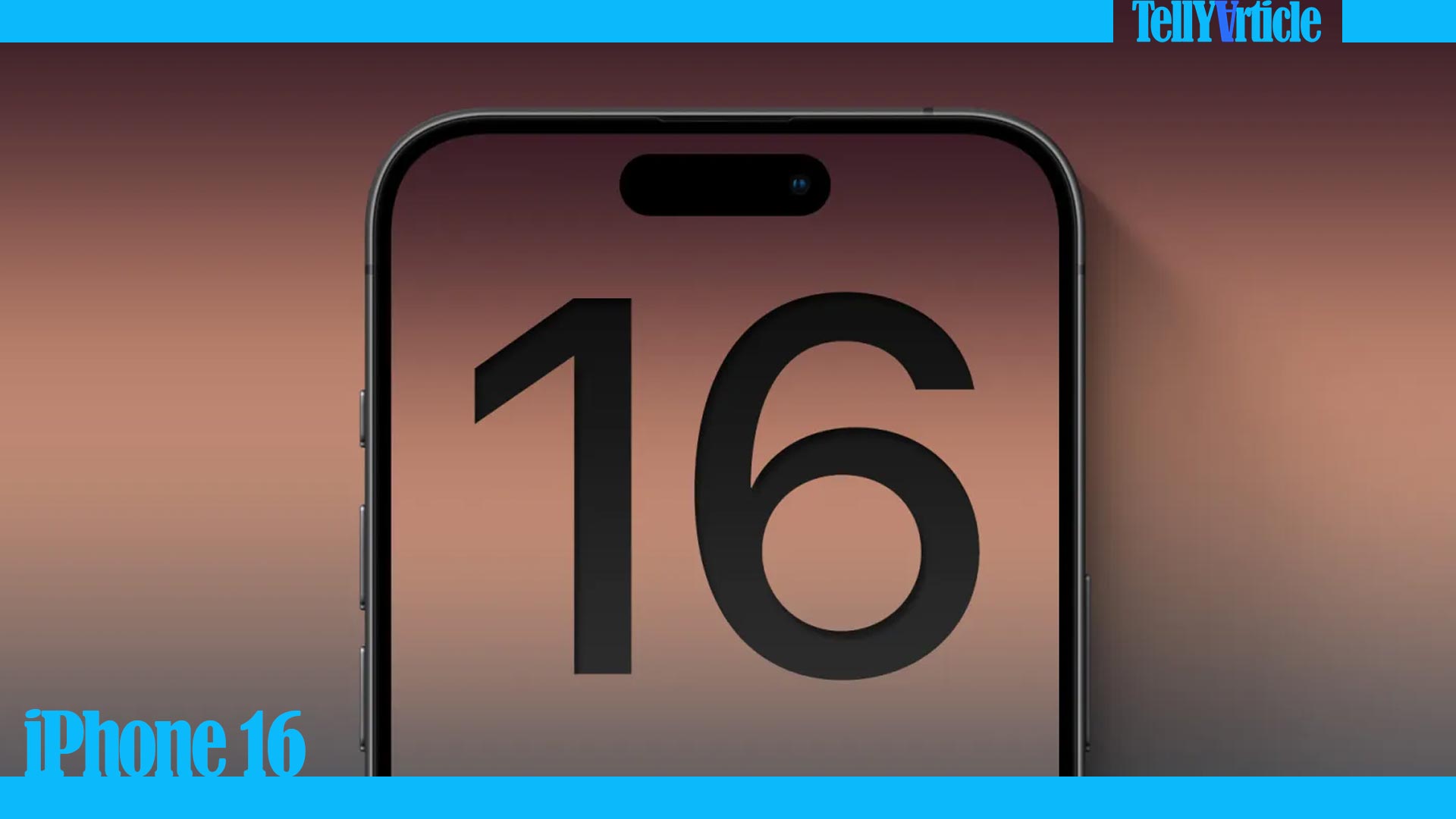
The iPhone 16 are “ phones designed since zero having in account a Apple Intelligence”. This is how he presented them Apple at its It’s Glowtime event, in which he also announced the new ones AirPods 4 and the new generation of Apple Watch series 10. . In case you don’t know, Apple Intelligence this is what the company calls its commitment to artificial intelligence.
The problem is that although they are designed for Apple Intelligence, the iPhone 16s that are going on sale today do not bring this promising improvement. Users will have to wait for Apple to release the iOS 18.1 update so they can enjoy it. And even so, only those who have English configured as their main language and are outside Europe will be able to do so.
That is to say, Spaniards who buy the iPhone 16 will not be able, at the moment, to enjoy the great attraction of the phone. Does that make the iPhone 16 a bad launch? No, but it does reduce your ability to compete with other phones like him Pixel 9 or the Samsung Galaxy S24 which are sold and have integrated AI.
It is increasingly difficult to innovate in the world of smartphones. The ability to improve hardware is constrained by the size of these devices: several processors cannot be mounted – as computers do MacBook Pro M3 Pro and M3 Max- nor can you add a lens that improves their photographic quality, much less can you add a huge battery. If all this were done, they would become hulks that are impossible to carry in your pocket.
Therefore, the future of smartphones is closely linked to software improvements. . There are no physical space problems there. Apple Intelligence is one of them and it will mean a change of chapter in the history of iPhone, a phone that will become more and more intelligent and will therefore be the most advanced on the market.
But we are not here to talk about promises, even if they are very promising, but to see what you will find if you buy this phone today. The iPhone 16 proves that function by function it is one of the best contenders for the best phone, with its sleek look, excellent cameras, and Pro-like features. Additionally, this year Apple has managed to increase battery life by around 10%, a notable figure.
I spent a few days using the iPhone 16 and this is what I thought.
iPhone 16, color news
The iPhone 16 is available in three storage options: 128 GB, 256 GB and 512 GB, which have been the configurations of recent years. What I like most about this year are the more vivid and vibrant color options: pink, teal, ultramarine blue, black and white. . . These new color combinations are strong, distinguishable and very pop. They definitely look bolder than pastel colors iPhone 15.
There is something to be said for using a smaller phone. Although there is no size change between the iPhone 15 and this year’s standard model, the iPhone 16 is a little lighter, weighing 170 grams which makes it very easy to use with one hand. It’s certainly much easier to do than with the larger Pro and Pro Max models. For the iPhone 16, Apple takes advantage of aerospace-grade aluminum in its design, which not only makes it lighter, but also more resistant to drops and scratches, something that thank God I haven’t had the chance to try.
The other novelty in terms of design is the position of the cameras and the arrival of two new buttons. Instead of the diagonal layout that the series has been using for the last three years, it has been reverted to a vertical layout to allow support for spatial capture of video and photos. Other design changes include the action button on the left side of the phone and the camera control on the right.
The iPhone 16 has an extra bright screen
Unlike the iPhone 16 Pro, there are no changes to the screen size of the new iPhone 16, it is still a screen 6.1-inch Super Retina XDR with a resolution of 2,556 x 1,179 pixels. Plus, the same cutout near the top for your Dynamic Island doesn’t resize.
Visually the screen does not disappoint. It is an OLED panel that works perfectly to play content, whether recorded with your phone itself or from social networks or platforms. It’s a balanced, nice-looking panel that does its job well. For the first time, Apple has given this display a brightness of 3,000 nits, which makes it look spectacular in any ambient lighting, even in full sun.
What is not so spectacular is its refresh rate. Its maximum is 60hz, something that makes the phone appear slower than it is. Like the iPhone 15, the Super Retina XDR display is not always on and does not support ProMotion, the name Apple gives to a 120Hz display. If you have tried a 120 Hz mobile, your adaptation will be difficult. If you come from the iPhone 12 or iPhone 13, you will not notice that number much.
I don’t think either thing is really a bother unless you come from a device that had those features. I’ve used 120Hz displays, but I haven’t noticed the iPhone 16 slow down excessively when scrolling, play video or play. It has great responsiveness and, again, I really enjoyed the viewing experience. Of course, Apple, next year put at least 90hz on it, to be able to enjoy video games more.
iPhone 16, cameras: more pro than ever
The strong point of iPhones are the cameras This year, there are two new features in this regard. On the one hand, the arrival of Macro mode to be able to take photographs in maximum detail and with maximum proximity; on the other, camera control.
The great aesthetic and functional novelty of the iPhone 16 is the new camera control. It is not a button itself, but a touch area as if it were a kind of mini trackpad. It works like this:
- One click: Open the camera app (or a third-party app).
- One click, camera open: Take a photo.
- Click and hold: Open the camera app and start a video recording.
- Light pulsation: Opens controls such as zoom. This button will also lock focus and exposure (available this fall) to reframe shots without losing focus.
- Double light press: Displays the camera preview menu to choose different controls such as exposure or depth of field.
- Slide: Switch between available adjustment options and also modify parameters such as zoom, exposure or depth of field when a control is selected.
The camera control works well although it took me a few days to get used to the new control, learning how much pressure to apply and discovering that there are hidden menus. I have gotten used to it and I like that it is in a natural position that allows me to take a photo with ease.
There is only one thing that seems strange to me: when you have the feel of a button, you have to press it when taking a photo. That pressure causes the phone to move. The photos have not been blurry because of that vibration, but they have forced me to take the photos using both hands, with one of them stabilizing the phone.
Camera control is more comfortable if we use the mobile horizontally. Who records horizontally? Above all, professionals and content creators. For the rest of us who record vertically it is a little more complex to use.
When taking photos, e.gyou can make two light presses to see more advanced options, such as exposure, depth, zoom, camera, styles and tone. You can click on any of them and then adjust by sliding your finger through the presets to make adjustments. When you activate Camera Control, the interface becomes much cleaner, leaving only the digital shutter button.
Apple has assured that this camera control can only be used for that, to control the camera. Third-party apps can use it for that same function. I would have liked that button to be used to scroll, whether in email, in X, on Instagram or on a website. But no, it’s useless.
I especially like that macro photography is now in the base model of the iPhone 16 and 16 Plus. It is a very fun shooting mode, and it makes, for example, the food look spectacular and so does the nature.
With the iPhone 16 family, Apple has focused on leveling the playing field and closing the gap between non-professionals and professionals. For the iPhone 16 and iPhone 16 Plus, Apple is left with two cameras: a 48-megapixel Fusion and a 12-megapixel ultrawide. Both are similar to the main and ultrawide of the iPhone 15 Pro and iPhone 15 Pro Max, but are favored in performance by the new A18 chip.
Technically, you can shoot from 0.5x ultra-wide angle to a 2x telephoto lens, or go up to 10x digital zoom. It’s not as versatile as the iPhone 16 Pro or Pro Max, considering they both have true optical zoom, but the camera isn’t far behind. Whether I’ve used it to capture cityscapes, portraits of people and dogs, or concert night lighting, the iPhone 16 has risen to the challenge.
I especially like the clarity and level of detail that the iPhone 16’s main camera offers: The «Fusion» nomenclature is twofold, combining every four pixels into one, delivering 48-megapixel quality in a 24-megapixel image that actually weighs like a 12-megapixel one. Don’t go crazy: all this means that he takes great photos that take up little space. It is a unique image processing system that only Apple has.
As for video or Apple is still miles ahead of the competition in terms of clarity, sharpness, contrast and video fluidity. Video recording maxes out at 4K 60fps with the iPhone 16, which is the norm on almost all other phones at this price.
While 4K capture at 120fps is exclusive to the iPhone 16 Pro, the iPhone 16 still has two options for slow motion capture: 1080p at 120fps and 720p at 240fps. Finally, Apple introduces a new audio editing feature with videos called Audio Mix. Thanks to the iPhone 16’s four microphones, I can now improve the audio after recording a video, a wonderful detail for all those who create content and which I hope to analyze in more depth, along with photographic styles, when I can test the iPhone 16 Pro.
iPhone 16 is more powerful thanks to the A18 processor
Leaving behind the A17 Pro from last year’s iPhone 15 Pro models, Apple equips the iPhone 16 with the latest A18 chipset. It is based on a new 3nm manufacturing process and offers 30% faster CPU performance than the previous A16 Bionic that was on the iPhone 15.
The A18 consists of a 6-core CPU composed of 4 efficiency cores and 2 performance cores, a 5-core GPU and a 16-core neural engine. All of this is combined with 8 GB of RAM, to help with everyday tasks, the most creative ones, games and even Apple Intelligence tools, such as photo cleaning or writing tools.
All synthetic benchmark tests show notable improvements for the iPhone 16. In Geekbench 6, the iPhone 16 achieves average single- and multi-core scores of 3,301 and 8,033 respectively, which is a significant improvement over the iPhone 15’s 2,518 and 6,179 scores. What’s even more notable is that the iPhone 16 offers 30% faster CPU performance than its predecessor, the A16 Bionic. The most notable thing is that these scores are even better than those of the A17 Pro chip in the iPhone 15 Pro Max. You can say that the A18 is very powerful, and I suspect it will offer a lot of margin for years.
The phone is certainly fast with everyday tasks, but the only complaint I have is that it doesn’t have the same level of fluidity with animations and actions as the iPhone 16 Pro Max, which I attribute to the iPhone 16’s 60Hz refresh rate.
The iPhone 16 battery is the best in years of a ‘no’ pro model
As with the iPhone 15 and all previous ones, Apple does not make public the battery size of any of its phones, or most of its products. We’ll wait for someone to break one up to get the answer in mAh. Instead, Apple says the iPhone 16 should last up to 22 hours of local video playback, up to 18 hours of streaming video playback, and up to 80 hours of audio playback. That is, 2 hours more video playback than the iPhone 15.
In my test days, I have used the phone intensely throughout the day and I have arrived at night with 22% battery, something that I think has not happened since my very beloved iPhone 11. After a few days of use, I estimate between 15 and 16 hours of screen time before having to recharge the iPhone 16.
The iPhone 16 also features new wireless charging technology compatible with the new MagSafe charger and the Qi2 standard: you can get up to 25W with MagSafe and up to 15W with Qi2. You will also need to combine either with an adapter of at least 30 watts. I’m not a big fan of wireless charging because it overheats devices, and heat and technology are never good friends. Exactly that happens on the iPhone 16, so I prefer to charge it with the cable.
iPhone 16, verdict: a great phone used with one hand
The iPhone 16 is a great phone that only needs to fix two details to be perfect: one is the 60hz screen, another is the arrival of AI. It shares many of the features of the iPhone 16 Pro. I’m referring to the action button, the camera controls and, once iOS 18.1 arrives, practically the same Apple Intelligence functions.
Equally impressive are the iPhone 16 cameras, that despite the price difference they continue to take clear photos, especially with the main lens. The only real shortcoming is the telephoto lens, but that’s the distinctive reason you should consider the Pro models. As a video camera, I also love that the iPhone 16 incorporates the same Audio Mix function to improve the sound of videos to my liking. Without a doubt an iPhone that is increasingly pro but with a friendlier price.


